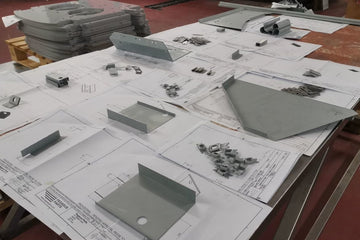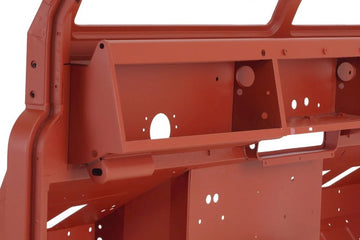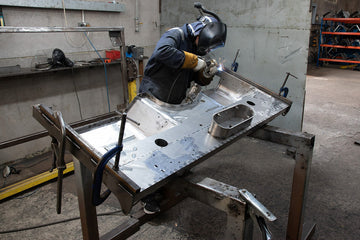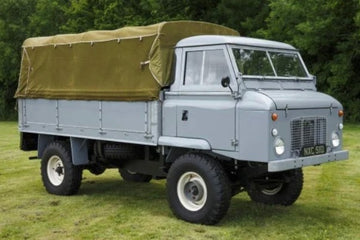Series 2 and 2A 88 and 109 inch 4 cylinder bulkheads 1958 to 1971

Production Dates
1958 To 1971 - Series 2/2a, 88" And 109", 4-cylinder
Over the course of production, The Rover Co. engineers made multiple incremental improvements to their bulkheads, but only ever used two Part Numbers, so Pegasus has introduced ‘Type’ numbers designed to easily identify which bulkhead you require, based on the month and year of when your Land-Rover went into production.
The following dates (listed below) are provisional and are based on actual production dates. The Vehicle Registration date is no guide to the Build Date.
Follow our steps below to identify your bulkhead.
345879 (TYPE 1.1) - Bulkhead, Series 2, March 1958 only
345879 (TYPE 1.2) - Bulkhead, Series 2, April 1958 only
345879 (TYPE 1.3) - Bulkhead, Series 2, May 1958 to December 1959
345879 (TYPE 2) - Bulkhead, Series 2, January 1960 to May 1960
345879 (TYPE 3) - Bulkhead, Series 2, June 1960 to January 1962
345879 (TYPE 4) - Bulkhead, Series 2a, February 1962 to March 1967
345879 (TYPE 5) - Bulkhead, Series 2a, March 1967 to October 1968
345879 (TYPE 6) - Bulkhead, Series 2a, October 1968 to December 1968
345879 (TYPE 7) - Bulkhead, Series 2a, January 1969 to September 1969
345879 (TYPE 8) - Bulkhead, Series 2a, October 1969 onward
Handmade In The UK
Our Process

Individual Components
We utilize our own designs and patterns to cut and shape the final parts. We have invested in advanced tooling to create a bulkhead that is comparable to Rover's original engineering. Pegasus have extensive experience in sheet metal work and are able to replicate all original pressing details, holes, spire nut locations, and footwell ribs.

Made Stiffer, Stronger and Corrosion-free
Our parts are fabricated with minimal pressing, preserving metal thickness. Using modern design and materials, we have improved performance by strengthening and stiffening weak points by 50% compared to the original bulkhead. This means that not only does the bulkhead maintain its original appearance, but it is also more durable and long-lasting.

Spot Welded Like The Originals
Pegasus bulkheads are constructed using the same spot welding method as the original bulkheads. The majority of the parts are joined together using spot or TIG welding to create sub-assemblies, which are then assembled into the final assembly. To ensure precise bulkhead geometry, the assembly is constructed on a 36 reference point jigs.

Final Stage Welded
Pegasus utilize TIG welding on the final assembly for heavy-duty brackets, lap joints, and butt joints. The heavy-duty brackets such as the bonnet hinges, tie rod brackets, and bottom feet are also welded into place using TIG welding to replicate the original oxy-acetylene welding method. We maintain the highest standards in our manufacturing process and have complete control over the quality of each finished bulkhead.

Kind Words From Our Customers














